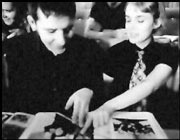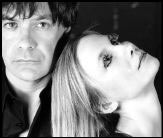BELLE & SEBASTIAN, JONATHAN RICHMAN
Paramount Theatre, 467-5510, $22.50 8 p.m. Fri., Sept. 14
MY INTERVIEW WITH Belle & Sebastian got cancelled, and that’s OK. After several postponements, the confirmation that it wasn’t going to happen actually came as a huge relief (which owed only a little to any trepidation I may have had at trying to decipher those Scottish accents over a mobile phone). It seemed odd that the famously shy octet—or at least the drummer and trumpet player—would agree to such a thing in the first place. They rarely do interviews; frontman Stuart Murdoch has sworn them off entirely. They frown on band photos. They don’t even list their own names on most of their records. Belle & Sebastian operate differently from just about any band on the planet, and that’s a big part of their charm. As a writer, a few quotes from the band might make things easier; as a fan, though, I’d prefer to continue to let their music speak for itself.
And that music is a bit unprecedented. Sure, there are the strains of Donovan, Love, Felt, Nick Drake, and the Smiths splashed throughout, and maybe even a little ’60s soul in the rhythm arrangements, but a Belle & Sebastian tune defies most modern songwriting conventions. Just like their public persona, their songs are almost completely self-deflecting. It’s not entirely uncommon for artists to create fictional characters and deliver stories from alternating points of view, but there usually remains something autobiographical nonetheless (do you think Morrissey ever went three minutes without talking about himself?).
With only rare exceptions, Belle & Sebastian songs belong to a fictional plane, and Murdoch and the band are uncommonly good short-story tellers. Judy, Lazy Line Painter Jane, the Boy with the Arab Strap, and their various other protagonists occupy their own distinct universes; their tales offer just a vignette with what seem to be characters who exist fully outside the realm of the pop song. The ultimate testament to the success of this method is expressed by some of their more enthusiastic fans, who have taken to penning their own stories based around favorite Belle & Sebastian characters.
The practice is undoubtedly a tad obsessive and helps perpetuate the image of their fans as a collection of tea-sipping, cardigan-wearing sensitive types, but it’s also evidence of how true these characters ring. They don’t exist to teach people lessons or to make people feel better or worse about themselves. They just are. This considered, it was heartening to learn that the main reason the band had to curtail their interview schedule was that they were busy wrapping up the soundtrack to Storytelling, Todd Solondz’s upcoming film. The match between band and director is perfect. Solondz’s Welcome to the Dollhouse succeeds because its protagonist, Dawn Wiener, doesn’t serve some cheap narrative goal. She isn’t particularly bright, attractive, or interesting, and Solondz gives us no reason to believe that she ever will be; that’s what makes her ordeal heartbreaking, hilarious, and very real. She just is. For both band and director, the essence of good storytelling informs their art.
This collaboration will introduce more people to the band, but it’s unlikely to change the minds of those who have already been exposed to their sound. Belle & Sebastian are now a good three or four years past being the indie band du jour, and their music hasn’t changed much in that time—their 1996 debut Tigermilk really isn’t very different from last year’s Fold Your Hands Child, You Walk Like a Peasant. If you thought they were pretentious a few years ago, you probably think they’re pretentious now. But if you’re one of those who have been seduced by their tender ways, their visit to Seattle—the band’s first—is likely to be more than the typical concert experience. Enjoy it, write a short story about it if you must, and let the music speak for itself. That’s the way they’d want it.








